It has been a while since Apple came out with something in-your-face. Yet, the launch of the iPhone 17 series and the iPhone Air marks a new era for the company that has always put a premium on identity, no matter how much everyone else around it continues to evolve.
iPhone 17 Pro Max: Orange is the new hack
Design: Aesthetically, the iPhone 17 Pro Max (and sibling 17 Pro) is the first to adopt a two-tone colour scheme (it’s subtle on deep blue, but more pronounced on silver and our runaway winner cosmic orange). Squint from afar and you’d be forgiven for mistaking it for having a MagSafe wallet on it.
We have to rave again, but the cosmic orange is just gorgeous.
The other giveaway indicating you have the latest iPhone in your hand is the redesigned camera block, which now stretches across the back, ala-Google Pixel. Apple has a fancier name for it – the "plateau" and has crammed in more components.
In short, this is the best iPhone design in recent times. This new look is the classic flat-edged, round-cornered design, but on steroids.
It still retains a 6.9-inch (6.3 inches for the 17 Pro) display, but with Ceramic Shield 2, which Apple says is up to three times tougher on scratches than its predecessor. Also, this protective layer is also on its rear, marking the first time this has been done.
Apple went back to using aluminium – a unibody frame for more design efficiency, a first on an iPhone – after titanium in the previous two iterations. While some may argue that titanium is more durable, aluminium is lighter and, more importantly, better suited for heat dissipation, which goes in tandem with the new vapour chamber inside that cools it faster.
Also, all new iPhones sold in the UAE are now eSIM-only. The carriers in the country have been eSIM-ready for a while, and it's just a matter of either visiting them or migrating from their apps to get you started.
The iPhone 17 Pros can support up to eight eSIMs, with any two active simultaneously.
What scratches? Now, there have been reports showing that the new Pros are susceptible to scratches – "scratchgate", as it's dubbed – with some testers even demonstrating it.
However, Apple has basically described the situation as mistaken identity, according to website 9to5Mac. The iPhone Pros in question and circulating on the web were, apparently, demo units within Apple Stores, handled by a high volume of hands on a daily basis. Apple said that the scratches were from their MagSafe stands.
And while teardown guru JerryRigEverything was able to scratch away at the iPhone 17 Pros, he still commended the durability of their back panels – which is what people have been claiming are the most vulnerable to scuffs.
We also gave it a try.
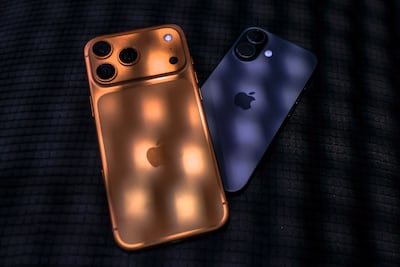
Taking a phone without a protective case, we plopped it into the pocket with keys and a bunch of coins and walked around, repeatedly pulling it out and putting it back in with no regard whatsoever. Bonus – and this was unplanned: it fell down twice inside the car, slipping on the magnetic holder that clips to the air-conditioning vent.
Glad to report our iPhone 17 Pro Max survived without a scuff. Phew.
Performance, camera and battery: Can’t get any more fluid than IOS 26, its Liquid Glass skin in particular. We’ve already detailed our experience using its beta version, and the public release, rolled out on September 15, isn’t much different.
To recap: Liquid Glass provides a smooth, futuristic user experience, “reflect[ing] and refract[ing] its surroundings”.
As for its camera, all three lenses on the iPhone 17 Pro Max now have 48MP Fusion sensors. The set-up packs a wallop, in combination with the A19 Pro chip that Apple says provides "MacBook-level" power.
You'll essentially have eight lenses, or focal lengths, from macro (0.5x) up to 200mm (8x), and providing a total optical zoom of up 16x, thanks to the telephoto lens now at 48MP. Its digital zoom maxes out at 40x.
The results were amazing, and compared to the iPhone 16 Pro Max, the new camera set-up was able to improve on lighting, provide sharper results and, noticeably, less noise when zooming afar. The same observations apply to video as well, and we felt that its stabilisation has also improved.
Meanwhile, on the battery, the iPhone 17 Pro Max now enjoys the title of longest-lasting iPhone with up to 39 hours of video playback – six hours more than its predecessor (the iPhone Air lasts up to 40 hours, but that's with its own MagSafe battery).







Our one-hour YouTube-at-full-brightness test, after multiple attempts, never went beyond a 5 per cent loss – in fact, one run yielded 4 per cent, which is really impressive. From a full charge in the morning, heavy use had us reaching for the charger by past noon the following day, while non-heavy use was enough for us crawl through sundown.
And so far, no heating detected; the new vapour chamber seems to be working – save for a little heat the very first time we booted it up.
iPhone 17
The entry-level iPhone 17 may look similar to its predecessor, but it has new tricks over and under the hood.
Design: The first thing you'll notice is that it now has a bigger 6.3-inch screen, as Apple leans towards more digital real estate. As mentioned earlier, Ceramic Shield 2 protects the device.
Apple says the iPhone 17, also using an aluminium frame, is more durable. We did a similar scratch test and, thankfully, it passed as well.
Performance, camera and battery: The device has "only" the A19 chip, which Apple says is faster and more efficient. It shows when we went through a gauntlet of games and videos.
As for its camera, both lenses on the iPhone 17 now have a 48MP sensor, which is a big boost for the ultra-wide sensor (it was only 12MP on the iPhone 16), with its default at 24MP.
That resulted in more balanced colours and less grain, with nothing much to complain about. You won't, however, have the telephoto powers as with its Pro counterparts, and you'll be limited to 4x optical zoom and 10x optical zoom – both of which are still stable.





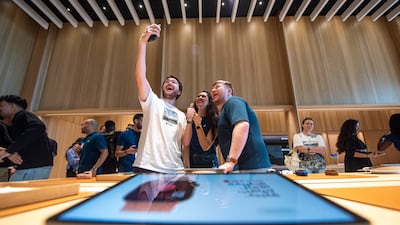
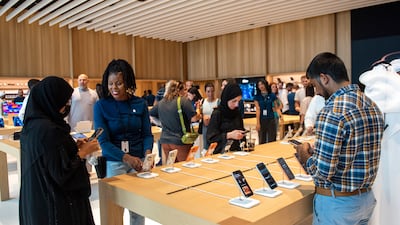
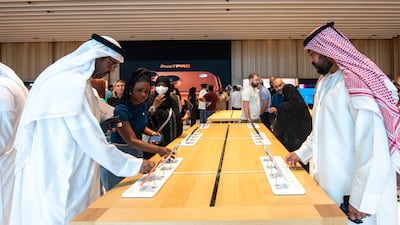
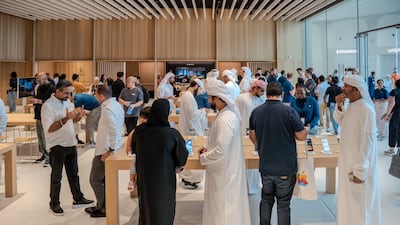

Also, both the iPhone 17 and iPhone 17 Pro feature a Centre Stage front camera, which automatically detects subjects (through their eyes) and adjusts the frame accordingly.
It's in the battery where the iPhone 17 gets a good upgrade – it can now last up to 30 hours of video, eight hours more than the iPhone 16. Our YouTube test showed it lost 6 per cent in an hour, and it was able to cross the noontime finish line in our endurance run.
AirPods Pro 3 and Watch SE 3
The AirPods Pro 3 features a new design, up to twice the power of active noise cancellation (ANC), up to four times more noise removal and a new adaptive equaliser that customises sound signature.
The feel is noticeably different from the first two versions, though we can really feel the deeper effect of the enhanced ANC. We also enjoyed the new sound quality, particularly with bass.
Apple also gave it a couple more hours of airtime as it now lasts up to eight hours on a single use – and five minutes in its case will give you an hour; these specs were close to our tests.
The Apple Watch SE 3, meanwhile, is probably the most capable in the SE line although it doesn't have the full repertoire of Series 11 (and Ultra 3).
Hand gestures have been improved and it now has an always-on display and its usual plethora of health metric trackers – though you won't get the new blood pressure tool in the other Watches.
Battery life remains at up to 18 hours and we had no problem using it for a full day – but, of course, it's highly recommended you charge it before calling it a night.
Verdict
This is arguably the best upgrade cycle for the iPhone, with the combination of a new look, improved cameras and battery, and the addition of the iPhone Air.
Also of equal importance, Apple has practically maintained pricing – you get double the storage for the same base prices – as we've previously detailed.
And we just can't stop staring at the cosmic orange flavour. So, note to Apple for what we'll assume to be the iPhone 18: we're waiting for an in-your-face green colour, in line with sustainability.

